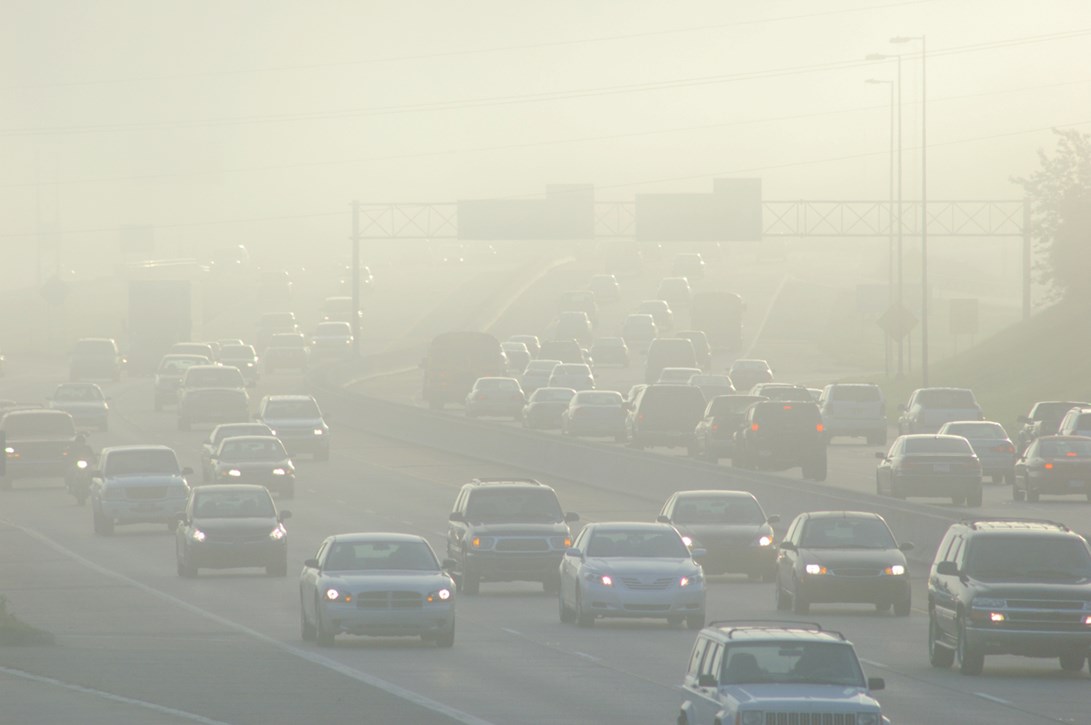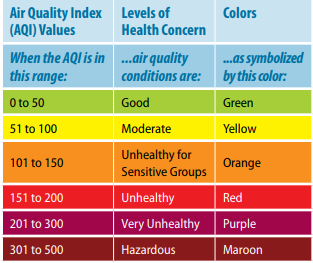
When it comes to the quality of our air, there are a lot of terms. It can be confusing to keep up with all of them. TruSens is here to help consumers achieve an understanding of these terms and why they matter. The best way to start is with the basics of air quality and how it is measured.
Frequently asked questions include, how is the air quality measured? How do we find this information? What do we do with this information now? In explaining the air quality index (AQI), we will answer these questions and more. Building on your knowledge of air quality, air pollution and other terms associated with our air may help you and your loved ones to better understand and protect yourselves from the effects of poor air quality.
Why is Air Quality Important?
There have been improvements in the air quality thanks to initiatives like the passage of the Clean Air Act in 1970. However, there are still many sources of air pollutants emitted by millions of people daily. Air quality affects your breathing every day, whether you’re indoors or outdoors. There is never a day or hour we go without breathing, making the air we’re breathing important. Checking your air quality should be done as if you are checking the weather. Like the weather, air quality varies from day to day.
What is the Air Quality Index (AQI)?
“The AQI is an index for reporting daily air quality. It tells you how clean or unhealthy your air is, and what associated health effects might be a concern... The AQI is calculated for four major air pollutants regulated by the Clean Air Act: ground level ozone, particle pollution, carbon monoxide, and sulfur dioxide.” (Environmental Protection Agency, EPA)
While the local AQI values are measured for outdoor air quality, there are also indoor AQI monitors to measure your indoor air quality. Different environments will yield different readings from the AQI monitor due to a variety of factors. Some sources, such as building materials, furnishings and products like air fresheners, can release pollutants almost continuously. Other sources, related to activities like smoking, cleaning, redecorating, and even certain hobbies, release pollutants intermittently. “The relative importance of any single source depends on how much of a given pollutant it emits and how hazardous those emissions are. In some cases, factors such as how old the source is and whether it is properly maintained are significant. For example, an improperly adjusted gas stove can emit significantly more carbon monoxide than one that is properly adjusted.” It is also important to note that pollutant concentrations can remain in the air for long periods after some activities. (EPA)
What are The Values of the Air Quality Index (AQI)?
When learning about the AQI, you will quickly notice there are ranges of numbers associated to the quality of the air. The higher the AQI value, the greater the level of air pollution and the greater the health concern. The AQI ranges from 0 to 500, with each of the values broken up into smaller ranges.
See the ranges and values of AQI within the chart from the EPA.

- Good - If the AQI is reading in the ‘good’ range, this range is the best level to be at and generally safe for all individuals.
- Moderate – Individuals who are extremely sensitive should consider reducing the number of hours they are outdoors. By doing so, they will also be reducing potential exposure to pollutants.
- Unhealthy Ranges – Any range above moderate is considered unhealthy to some degree. Whether the ranges are in ‘unhealthy for sensitive groups’, ‘unhealthy’, ‘very unhealthy’, or ‘hazardous’, all should take caution. The simplest way to avoid potential health issues from unhealthy ranges of AQI is to limit prolonged outdoor time.
Factors in Increasing the Air Quality Index (AQI)
The AQI varies based on your location and can change day to day or even hourly. The factors that affect an AQI also vary based on if the reading is indoors or outdoors. Air pollutants come from a long list of sources, but below are the factors that contribute to the measurement of the AQI values.
(The level of concern with each of the following factors may vary based on location.)
- Ozone is a gas found in the air we breathe. Since it is higher outdoors, the simplest way to reduce your exposure is by decreasing your time spent outdoors.
- Particle Pollution (also known as “particulate matter”) consists of a mixture of solids and liquid droplets. Some particles are emitted directly; others form when pollutants emitted by various sources react in the atmosphere.” (EPA)
- Carbon Monoxide is an odorless, colorless gas that forms when carbon in fuels do not completely burn. Carbon monoxide can be emitted from several sources including cars, home appliances, and more.
- Sulfur Dioxide is a colorless, reactive gas produces when sulfur-containing fuels are burned.
Where to Find Your Air Quality Index (AQI)
AQI is as simple as checking the weather or news stations. The AQI for your location can be found online, via hotline or email subscription, or through media channels.
- Media – Local media like newspapers, television and radio will provide daily reports on the air quality. Typically, this information will be shared at the same time as the weather forecasts.
- Online – Depending on where you live in the world, there is a varying website for your local AQI. Often, media channels will also have a site there are distributing the information again for those who missed out on the original source.
- Hotline or Email - Generally, the same sources that will distribute the AQI through online platforms or media will also have services through hotline or email to distribute this information.
- AQI forecasts – Much like a weather forecast, there are sources that will also provide AQI forecasts based on past data and patterns.
How to Deal with Poor Air Quality
- Don’t make assumptions, take precautions. Air pollutants may pose a threat on you, even if you’re healthy. Take precautions no matter the circumstances you are in. Children, teens, elderly, and those with pre-existing conditions should take extra precaution when it comes to air quality and knowledge of the AQI.
- Adjust your plans based on each day’s AQI. On days that have a higher AQI value, avoid or limit time spent outside and prolonged or vigorous outdoor activity.
- Avoid the sources of air pollution. Stay away from busy highways and switch up your location for a weekend if you live in a city or an area that frequents in wildfires city.
- Stay indoors. Indoor air quality is often affected by the outdoor air quality and has problems of its own, but it is easier to take steps in managing your indoor air quality over the outdoors.
How do Air Purifiers Relate to the Air Quality Index (AQI)?
It is nearly impossible to not bring the outdoor air inside your home. Therefore, many of the pollutants that cause harm to our outdoor air and raise the value of the AQI, are also within your home. Air purifiers are a great tool to monitor and help improve your home’s value on the AQI. The purpose of an air purifier is to take in and filter the air within your home and produce cleaner air by the end of its process, therefore improving the value of your home’s AQI value.
An important feature to pay attention to in your choice of air purifier is its ability to read the quality of the indoor air. Better yet, ensure that any air purifier you purchase follows the Air Quality Index in order to accurately understand the quality of your indoor air. An air purifier without these features may have a less accurate reading of the room and not provide the proper care to your air.
Conclusion
Now knowing a little more about AQI you can see why it is important, especially to those within the sensitive groups. Understanding all the factors that play a role in increasing the AQI can also help you avoid breathing them in or adding to the problem. It can be difficult to remember that there are things unseen to the naked eye that we should be acknowledging and taking precautions with as well.